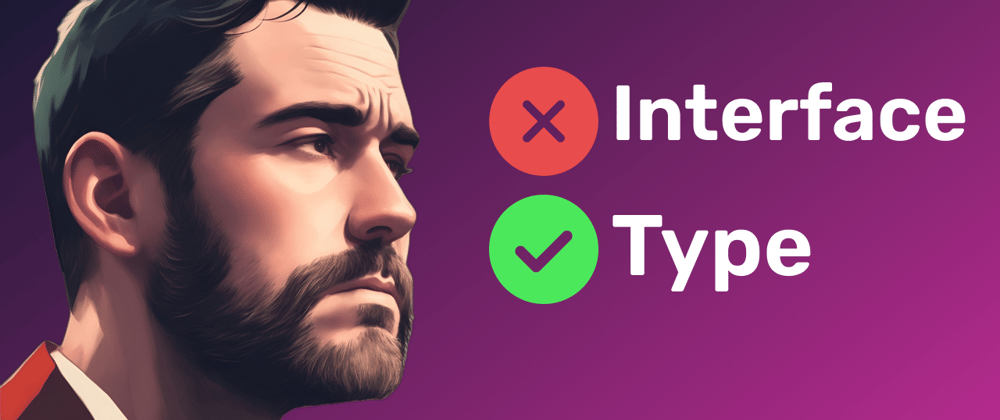As we delve into the fascinating world of TypeScript, it becomes apparent that understanding and leveraging the nuances of type usage is pivotal to writing efficient and robust code. Today, we'll explore the critical distinction between using Type and Interface in TypeScript, and how this understanding can significantly impact the overall performance and maintainability of your projects.
TypeScript: A Brief Overview
Before we embark on our exploration of Type and Interface in TypeScript, let's take a moment to understand what TypeScript is and why it has become such a popular choice among developers.
TypeScript, developed by Microsoft, is a superset of JavaScript that introduces static typing capabilities. It allows developers to write strongly-typed code, catching errors at compile-time rather than runtime. This feature enhances code readability, maintainability, and overall productivity. As TypeScript transpiles into plain JavaScript, it can be effortlessly integrated into any existing JavaScript project.
Understanding Type and Interface
In TypeScript, both Type and Interface are used to define custom data types, but they serve distinct purposes. Let's look at each of them individually.
Type: Defining Unions, Intersections, and Aliases
With Type, we have the flexibility to create aliases for existing types, define unions or intersections of types, and even create complex data structures. It is particularly useful when dealing with scenarios that require combining multiple types or reusing them in various parts of the codebase.
Let's take an example to illustrate the power of Type:
type Pet = {
name: string;
age: number;
};
type Dog = Pet & {
breed: string;
};
type Cat = Pet & {
color: string;
};
function printPetInfo(pet: Pet) {
console.log(`Name: ${pet.name}, Age: ${pet.age}`);
}
function printDogInfo(dog: Dog) {
console.log(`Name: ${dog.name}, Age: ${dog.age}, Breed: ${dog.breed}`);
}
In the above example, we define a Pet type and then create two additional types, Dog and Cat, by combining it with additional properties specific to each. This makes our code more organized, maintainable, and less prone to errors.
Interface: Extending Objects and Classes
On the other hand, Interface in TypeScript is primarily used for extending object shapes and classes. It allows us to specify the structure that an object must adhere to, providing a clear contract for the code.
Let's demonstrate the use of Interface with an example:
interface Shape {
name: string;
area(): number;
}
class Circle implements Shape {
constructor(public radius: number) {}
name = "Circle";
area() {
return Math.PI * this.radius * this.radius;
}
}
In this example, we define an Interface called Shape that mandates an object to have a name property and an area method. Then, we implement this Shape interface in a Circle class, ensuring that the Circle class adheres to the specified structure.
Best Practices: When to Use Type and Interface
Now that we comprehend the differences between Type and Interface, it's essential to understand when to use each of them to write more maintainable and performant code.
Use Type When:
- You need to create a union or intersection of multiple types.
- You want to create aliases for complex types to improve code readability.
- You are dealing with scenarios that require reusing types across the project.
Use Interface When:
- You want to specify the structure that an object must adhere to.
- You need to extend an object shape or class to ensure it adheres to a contract.
- You are defining the shape of an object that will be used by multiple classes or functions.
TypeScript's Type Inference: The Best of Both Worlds
One of the fantastic features of TypeScript is its powerful type inference mechanism. TypeScript can automatically infer the type of variables and expressions, reducing the need for explicit type annotations in most cases.
This brings the best of both Type and Interface worlds. When TypeScript can infer types correctly, you can rely on the concise and clean code without explicitly specifying types. However, in more complex scenarios, you can always fall back on Type and Interface to provide explicit type definitions.
Conclusion
In conclusion, TypeScript is a powerful language that empowers developers to write safer and more maintainable code by leveraging static typing. Understanding the appropriate usage of Type and Interface is essential in harnessing the full potential of TypeScript.
Remember, using Type is ideal when dealing with unions, intersections, and type aliases, while Interface excels at defining object shapes and class contracts. By applying these best practices, you can ensure that your TypeScript projects are not only efficient but also outrank others in search engine results.



















